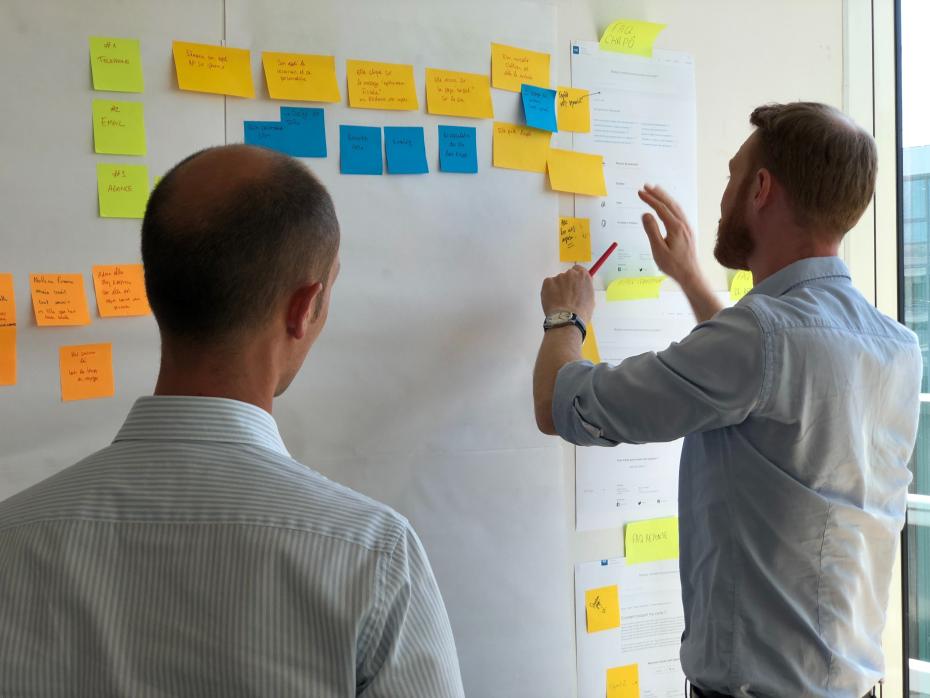
Building bridges between academics and professional services
Five strategic tactics for a seamless collaboration between academics and professional staff in pursuit of a learner-centred education

You may also like
Popular resources
Higher education finds itself, once again, at a crossroads, faced with rapid technological advancements, evolving student needs and ever-transforming societal shifts. The ante has been upped, with the challenge now stretching beyond academic rigour to crafting engaging, inclusive and personalised environments for a diverse range of learners. At the heart of this transformation is the need for strong cooperation between academics and professional services staff. While their roles differ, the ultimate goal of these highly specialised groups of professionals aligns perfectly: creating quality learning and teaching experiences. Embracing this shared endeavour paves the way for more wholesome and supportive spaces where the voices of academics, professional service staff and learners are heard, valued and impactful.
There’s often a stark gap in higher education institutions, with academics and professional service staff operating in separate spheres. Overcoming this disconnect requires us all – from professors to administrators – to be listeners and learners prepared to broaden our horizons, flex our empathetic muscles and enhance our skill sets. More than ever, it calls for open and effective communication, a shared ethos and a shift towards distributed leadership that fosters greater ownership and collective decision-making.
- Resource collection: the art of collegiality and why it matters
- Instructional designers: how to work well with teachers
- Running a diverse team is harder work – but the rewards are immense
The rise of commercially available generative AI technologies, such as chatbots, underscores the urgent need for synergetic environments. While AI has already revolutionised learning and teaching, fully realising its potential demands a collaborative effort between academics and professional services to jointly steer revolutionary pedagogies, initiate welcoming learning journeys, and develop a flexible and current infrastructure. Above all, it requires working together towards technological understanding as a perpetual journey, not a one-off training session. That should be translated to an open and honest knowledge exchange encouraging mutual skills enhancement and fostering solidarity amid change. Such an empathetic mindset can be transformative, placing learners’ needs at the forefront, even amid rapid technological advancement.
Despite the lack of a one-size-fits-all solution to bridge this enduring gap between staff teams, these are some simple tactics that I have found effective in aiding cooperation:
- Transform core modules to transform programmes: Nearly every department or school has a series of core modules underpinning the programmes on offer. When redesigning your institution’s programmes, aim first to redesign these key modules jointly and put emphasis on learners’ insights. Change will spread out. First, these core modules have a foundational character and thus their revamp will raise expectations for learners and higher education professionals. Second, their co-taught character allows for cementing new alliances. The shared endeavour allows key and multiple stakeholders to learn about each other’s strengths and abilities and foster mutual respect and understanding.
- Diversified communication channels: Professional services and academics rarely communicate in low-stress contexts. Quality time can ease combative dynamics often created between the two groups. Creating opportunities for communication, such as joint workshops and shared training sessions or collaboration on low-stakes projects, can create an open, communicative environment that leads to greater empathy and honest teamwork.
- Job shadowing: Facilitate opportunities for academics and professional services staff to glimpse over each other’s responsibilities, challenges and interests. This could include opportunities for attending live lectures for professional services staff or for observing the daily routine of administrative tasks for academics (in both cases, focus on interactions with learners); research seminars taking place twice or thrice a year and during normal working hours open to professional services staff; and joint discussions on each other’s career paths and sector developments. Such activities can enhance mutual respect and create a sense of shared purpose.
- Inclusive leadership structures: Develop leadership models that include voices from both academics and professional services staff in decision-making processes. Town hall meetings, themed discussions, decision-making committees with elected representatives and similar can help to build a shared sense of ownership and collective responsibility.
- Timing: Be mindful of the timing of initiatives to ensure maximum engagement. Avoid periods of high stress, such as exam seasons or the beginning of the academic term, and ensure that initiatives align with the academic calendar.
Navigating the path of change, addressing competing priorities and ensuring buy-in can be challenging. These hurdles can be overcome or even mitigated by providing sufficient resources, establishing shared goals and vision (with regular review), ensuring effective communication and offering recognition. The empathetic approach resulting from the process of building a meaningful synergy between individuals and teams will naturally lead to an open mindset and foster a culture where students are viewed as partners in their education.
Higher education is a shared journey, a collaborative effort. By fostering cooperation between academics and professional services staff, we can pool our strengths to build resilient institutions capable of facing the future.
Foteini Springou is an educational adviser in the Faculty of Sciences at the University of York.
If you would like advice and insight from academics and university staff delivered direct to your inbox each week, sign up for the Campus newsletter.



Comments (0)
or in order to add a comment